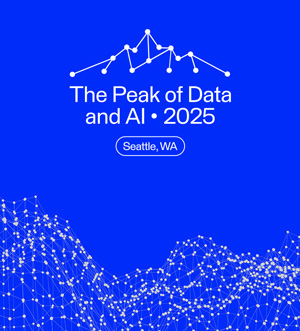Creating cross-government success with authoritative data sharing


Governments are working with more data than ever. There is a focus on managing data as a strategic asset to meet the needs of citizens, businesses, agencies, and the broader public sector. Governments of all levels need to enable the strategic management and sharing of authoritative data to improve government efficiency, increase situational awareness, enhance emergency response, and better serve citizens.
What Is Authoritative Data?
Before we get into authoritative data sharing, let’s get down to what authoritative data is.. exactly. Authoritative data comes from authoritative sources, is officially certified, and can be trusted.
Many government agencies and open data portals provide authoritative data that can be used by citizens and other government departments alike. For example:
- The California State Geoportal – A centralized geographic open data portal, which includes authoritative data and applications from a multitude of California state entities.
- DataBC – B.C.’s investment in data management and infrastructure provides government ministries and agencies, businesses and citizens with direct access to authoritative data through a wide variety of web applications and services.
Examples of Government-to-Government Data Initiatives
One common critical dataset being shared across governments is landbase data that is typically created and maintained at the local level. It consists of different layers of information including addresses, parcels, property attributes, administrative boundaries, street centerlines, and owner information.
Local governments need to develop complete and accurate landbase datasets to support tax assessment, engineering, planning, and more. These datasets can be consolidated for state/provincial and federal government departments to support higher-level initiatives, such as emergency response and Next Generation 9-1-1 (NG 9-1-1). For example:
- The State of Indiana integrated GIS landbase datasets from 92 counties into a central repository to support emergency response for natural disasters, economic development, and other initiatives. This data includes point addresses, parcel shapes and ID numbers, local government geo-administrative boundaries, and street centerlines with address ranges.Having regional data readily available helps to immediately add value. This integrated data is also being used in Indiana’s new statewide first responders dispatch system and citizen services applications like the Indiana Secretary of State’s “Who Are Your Elected Officials?”
- Santa Clara County built a dynamic map of city-sourced address points for their 911 dispatch system to improve emergency services response time and location accuracy. They aggregated datasets from 15 cities and supplemented them with public safety layers.The result was the Regional Address Map for Public Safety (RAMPS) and the Regional Address Map (RAM) which empower cities to contribute addresses on a quarterly basis. This system has increased the number of known addresses by 50% and helped improve the county’s emergency services.
- The State of Arizona organized an effort to develop and maintain an official statewide address database with data from 16 local 9-1-1 systems in preparation for the upcoming switch to Next Generation 9-1-1 systems. On the national level, the U.S. Department of Transportation (USDOT) partners with all levels of government to compile their authoritative data into the National Address Database (NAD).
As governments in the United States and Canada are planning for and making the transition to NG 9-1-1 to improve public emergency communications services in an increasingly digital and mobile society, having complete, accurate, and current addresses is critical.
There are many other types of authoritative data being shared across government agencies:
- The Natural Heritage Information Centre (NHIC) compiles, maintains, and distributes data about the location of species of conservation concern, plant communities, wildlife concentration areas, and natural areas in Ontario, Canada. They collect data from conservation partners, government and non-government organizations, and developed a centralized authoritative source for provincially tracked species information in Ontario.
- The U.S. Geological Survey (USGS) and the National States Geographic Information Council (NSGIC) are collaborating on the national 3D Elevation Program (3DEP) to respond to growing needs for high-quality topographic elevation data including both bare earth and 3D point clouds. The program involves collaboration across federal, state, local, tribal, and even private organizations on LiDAR data acquisition efforts. 3DEP informs critical decisions ranging from immediate safety of life, property, and environment to long-term planning for infrastructure projects.
Learn more about how state governments are making use of data by signing up for the webinar Achieve Your State Missions with Better Data.
Keys to Sharing Data Across Government Levels
When governments launch data aggregation and sharing initiatives with the goal to provide authoritative data at the county, state, province, or federal level, there are more datasets to consolidate, more stakeholders to work with, and therefore more challenges to overcome.
Here are a few keys to success:
Identify Shared Objectives
Each level of government collects data to support their missions, legislative mandates, and daily operational needs. Sometimes, there are overlapping goals and initiatives.
One example of this is in the State of Indiana. It was discovered that the Indiana Department of Homeland Security was in the early planning stages of aggregating critical datasets from various sources while the Indiana Geographic Information Council (IGIC) was looking to complete a similar task. Rather than duplicating the effort, their shared objectives meant they could instead work collaboratively and operate more efficiently.
Create Seamless Processes
Aggregating local datasets into statewide databases is a huge undertaking. It takes tremendous effort and buy-in to consolidate data from local governments due to different infrastructures, data management practices, and datasets along with limited resources.
The key is to implement a data integration solution that works seamlessly with existing infrastructure and processes. With a data integration platform like FME, you can connect data from different systems and streamline all processes. That means local counties won’t need to make any changes to their current methodologies, formats, data models, or platforms.
Ensure Data Quality
It’s always a challenge to achieve data accuracy and consistency when it comes to data consolidation, especially when data needs to be homogenized across city, county or state lines. For example, counties may have address data stored in different schemas containing information, such as house numbers, street names and street types in different fields.
Data validation efforts can be applied to translate all data into a standard one with all the fields merged before the data can end up in a statewide database. Issues like this can be easily tackled by using FME to transform, validate, harmonize, and load processed data into the central repository automatically.
Develop Standardized Workflows
Authoritative data needs to be constantly updated to remain complete and current. Changing addresses might be a common thing, but not having an accurate address database might risk the safety of citizens in case of a 911 emergency response.
In order to maintain an up-to-date database for a state, province or country, standardized processes have to be implemented to boost operational efficiency and reduce manual workload. For the Washington State Department of Revenue, they did this by using FME. They developed an automated no-code workflow to process data sourced from 38 counties and keep data updated at regular intervals, saving them immense time. Streamlined data integration and updating processes help government organizations deliver data-sharing projects with increased efficiency and reduced cost.
Make Data Accessible
It’s common among all levels of government to share data with each other and the public through open data portals.
The Arkansas GIS Office website is a great example of efficient distribution and sharing of authoritative data. Hundreds of datasets are organized by categories, such as boundaries, elevation, environment, location, and transportation, and can be easily accessed and downloaded through the web app created with FME. AZGeo also developed a self-serve data download application to make thousands of datasets easily accessible. The easier it is to access the data, the more the data gets used, and the more value governments get out of their data.
With the acceleration of digital transformation among governments and growing demands from modern citizens, governments will have increasing amounts of data to leverage for making strategic business decisions and achieving higher missions. Having an enterprise data integration solution in place will help governments collaborate on data-sharing initiatives with increased efficiency, better results, and long-term benefits.
To get started with your cross-government data-sharing initiatives, try FME for free today. And, don’t forget to sign up for the Achieve Your State Missions with Better Data webinar to learn more about how you and your team can do more with data.



